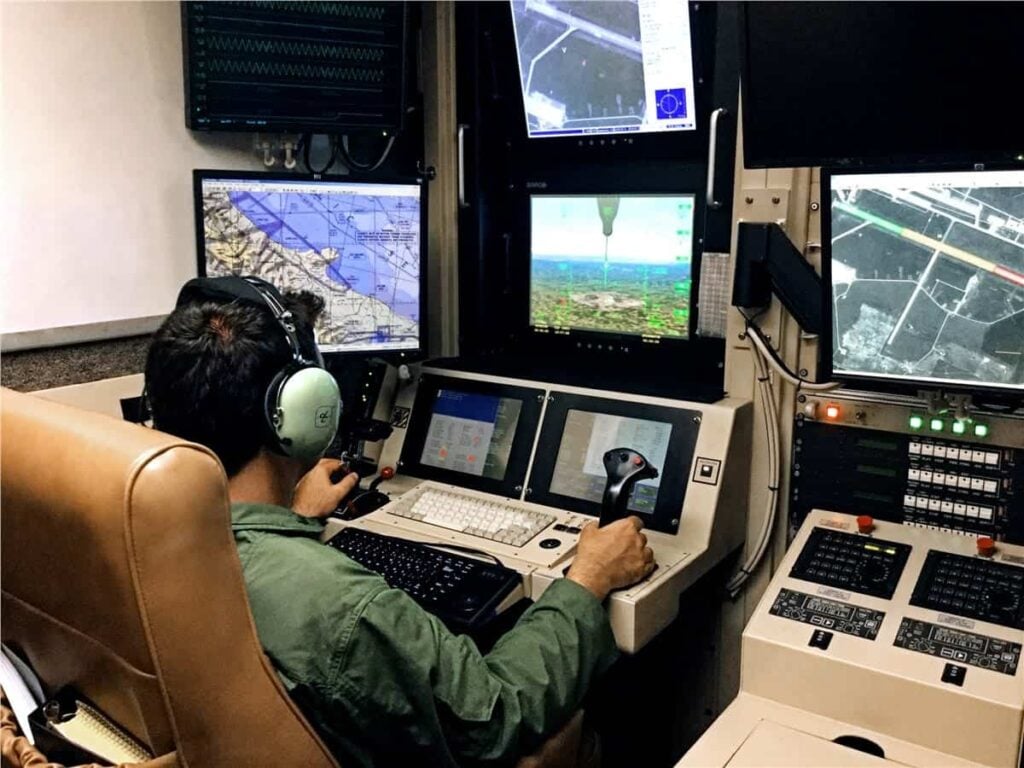CAE has announced that the Italian Ministry of Defence and Italian Air Force have formally qualified the CAE-built Predator Mission Trainer for zero flight time training on the Predator B/MQ-9 UAS (unmanned aeril system) variant and the simulator has been accepted as ready-for-training at the Amendola Air Base in Italy. The Predator Mission Trainer (PMT) is the highest fidelity simulator ever developed and fielded for the Predator family of remotely piloted aircraft (RPA) systems developed by General Atomics Aeronautical Systems, Inc.
Officials from the Italian Air Force and executives from CAE and GA-ASI celebrated the milestone during a ceremony at the Amendola Air Base.
“The incredible realism of the Predator Mission Trainer gives us a critical training capability to efficiently produce the highly skilled Predator crews we need to conduct a range of operational missions,” said an Italian Air Staff Representative. “Having the world’s highest fidelity Predator Mission Trainer as part of our unmanned systems centre of excellence in Italy gives us unmatched training flexibility and the ability to leverage simulation-based virtual training throughout our curriculum.”
The Predator Mission Trainer was jointly developed by CAE and GA-ASI. Earlier in 2018, the Italian Air Force began training on the Predator A variant of the Predator Mission Trainer.
“The development of the Predator Mission Trainer for the Italian Air Force represents a new level of fidelity and capability in the use of simulation-based training for remotely piloted aircraft pilots and sensor operators,” said Gene Colabatistto, Group President, Defence & Security, CAE. “We have leveraged our decades of experience developing the highest fidelity flight simulators for commercial and military aircraft, and applied the same discipline to this ‘zero flight time’ Predator Mission Trainer so that aircrews could potentially conduct all training in the simulator without necessarily requiring further training on the actual aircraft. We believe this Predator Mission Trainer is the first Level D equivalent simulator for an unmanned aircraft.”
The Predator Mission Trainer was formally qualified by the Italian Ministry of Defence’s Directorate of Air Armaments and Airworthiness (DAAA).
As prime contractor on the program, CAE collaborated with GA-ASI and the Italian Air Force to perform flight testing on an actual Italian Air Force Predator aircraft to gather the required flight data used in the development of the Predator Mission Trainer. The use of actual flight data specific to an individual aircraft, which is required when developing Level D simulators – the highest qualification for flight simulators – is a first for the Predator family of RPAs. For the physical hardware, CAE used an actual Block 15 Mobile Ground Control Station (MGCS) provided by the Italian Air Force to ensure the highest level of fidelity and realism. The Predator Mission Trainer also features CAE’s high-fidelity sensor simulation, fully interactive synthetic and tactical environment for enhanced mission training, and use of the Open Geospatial Consortium Common Database (OGC CDB) architecture for interoperable and networked training capabilities.
“GA-ASI was pleased to collaborate with CAE to develop this advanced simulator for the Predator, and we expect this training capability will be highly desired by militaries acquiring our family of remotely piloted aircraft systems,” said David R. Alexander, president, GA-ASI. “The Predator Mission Trainer will play a key role helping the Italian Air Force develop highly skilled and well-trained aircrews who are prepared and ready to operate the proven Predator RPA systems.”



















